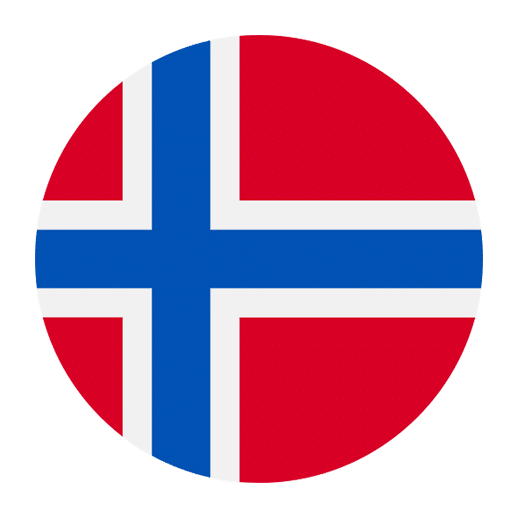Learning a new language is always an exciting journey, and expressing your likes and dislikes is a fundamental part of any conversation. In Norwegian, as in many other languages, there are specific phrases and structures used to convey your preferences and aversions. This article will guide you through the nuances of expressing likes and dislikes in Norwegian, providing you with the vocabulary and grammatical structures needed to articulate your preferences confidently.
Basic Vocabulary
Before diving into the sentences and expressions, it’s essential to familiarize yourself with some basic vocabulary related to likes and dislikes. Here are some key words and phrases:
– Liker (Like)
– Misliker (Dislike)
– Elsker (Love)
– Hater (Hate)
– Favoritt (Favorite)
– Interessant (Interesting)
– Kjedelig (Boring)
– Gøy (Fun)
– Morsom (Funny)
Expressing Likes
To express that you like something in Norwegian, you typically use the verb liker. Here’s a simple structure to follow:
Jeg liker + noun/verb
– Jeg liker kaffe. (I like coffee.)
– Jeg liker å lese. (I like to read.)
If you want to express a stronger preference, you can use the verb elsker:
– Jeg elsker sjokolade. (I love chocolate.)
– Jeg elsker å reise. (I love to travel.)
When talking about your favorite things, the word favoritt comes in handy:
– Min favorittfilm er Inception. (My favorite movie is Inception.)
– Hva er din favorittbok? (What is your favorite book?)
Expressing Dislikes
To express that you dislike something, the verb misliker is commonly used. Here’s the basic structure:
Jeg misliker + noun/verb
– Jeg misliker fisk. (I dislike fish.)
– Jeg misliker å jogge. (I dislike jogging.)
For stronger aversions, the verb hater is appropriate:
– Jeg hater edderkopper. (I hate spiders.)
– Jeg hater å vente. (I hate waiting.)
Using Adjectives to Express Preferences
Adjectives are a great way to add detail to your likes and dislikes. Here are a few examples of how adjectives can be used:
– Jeg synes filmen var interessant. (I think the movie was interesting.)
– Jeg synes boken var kjedelig. (I think the book was boring.)
– Jeg synes festen var gøy. (I think the party was fun.)
– Jeg synes han er morsom. (I think he is funny.)
Comparative and Superlative Forms
To express stronger opinions, you might want to use comparative and superlative forms. Here’s how you can do that:
– Jeg liker pizza bedre enn pasta. (I like pizza better than pasta.)
– Jeg liker sommeren best. (I like summer the best.)
Comparative form: bedre enn (better than)
Superlative form: best (the best)
Asking About Preferences
Knowing how to ask about someone else’s likes and dislikes is equally important in a conversation. Here are some useful questions:
– Hva liker du? (What do you like?)
– Hva misliker du? (What do you dislike?)
– Hva er din favorittmat? (What is your favorite food?)
– Hvilken film liker du best? (Which movie do you like the best?)
Responding to Questions
When someone asks about your likes and dislikes, you can respond using the structures we’ve covered. Here are a few examples:
– Jeg liker å spille fotball. (I like to play soccer.)
– Jeg misliker å stå opp tidlig. (I dislike getting up early.)
– Min favorittfarge er blå. (My favorite color is blue.)
– Jeg liker komedier best. (I like comedies the best.)
Expressing Conditional Preferences
Sometimes, you may want to express preferences that depend on certain conditions. In Norwegian, you can use the word hvis (if) to create conditional statements:
– Jeg liker å gå tur hvis været er fint. (I like to go for a walk if the weather is nice.)
– Jeg misliker å kjøre hvis det er mye trafikk. (I dislike driving if there is a lot of traffic.)
Common Expressions and Phrases
Here are some common expressions and phrases that you might find useful when talking about likes and dislikes:
– Det er min favoritt. (That is my favorite.)
– Jeg er ikke så glad i… (I am not so fond of…)
– Jeg foretrekker… (I prefer…)
– Jeg kan ikke fordra… (I can’t stand…)
Examples:
– Det er min favorittrestaurant. (That is my favorite restaurant.)
– Jeg er ikke så glad i sport. (I am not so fond of sports.)
– Jeg foretrekker kaffe fremfor te. (I prefer coffee over tea.)
– Jeg kan ikke fordra snø. (I can’t stand snow.)
Practice Makes Perfect
The best way to become comfortable with these expressions is to practice them in real-life situations. Here are a few tips to help you practice:
– Engage in conversations with native Norwegian speakers or fellow learners.
– Write down your likes and dislikes in Norwegian and try to form sentences.
– Watch Norwegian movies or TV shows and listen to how characters express their preferences.
– Use language learning apps that focus on vocabulary and sentence building.
Conclusion
Expressing likes and dislikes is a vital part of communication in any language. By learning the vocabulary, grammatical structures, and common expressions used in Norwegian, you can confidently share your preferences and engage in more meaningful conversations. Remember to practice regularly and immerse yourself in the language as much as possible. Happy learning!

